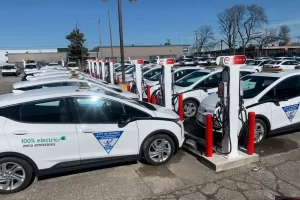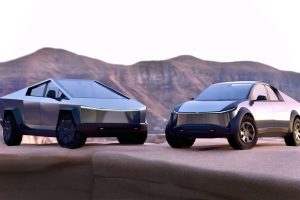The Society of Automotive Engineers (SAE) and Car and Driver have published a report challenging the EPA’s EV range estimate calculations.
As revealed by countless surveys, one of the most critical specifications for EV buyers is how far the vehicle can drive on a single charge. But often, without a way to test it themselves, EV customers are forced to use the number printed on the window sticker or posted on the EPA’s website, which is the agency that has typically tracked and measured these capabilities. Now, those numbers are being challenged by research from SAE International and the Car and Driver magazine.
According to the research published by Car and Driver, the EV range estimates published by the EPA are, on average, 12.5% higher than the numbers they achieved in their testing, which could be quite a shock for a car buyer. In comparison, Car and Driver’s ICE vehicle testing was only 4% off of the EPA’s estimates, which were actually lower than their testing results.
As noted in the published report, this range discrepancy was entirely expected, thanks to the difference in testing methodology, but that was ostensibly the point. First, because the EPA only provides consumers with a single highway/city combined range number – which is slightly weighted toward city driving (55/45) – customers who predominantly drive on the highway will consistently fail to reach the estimated range number. Further, the inverse is true for drivers who spend most of their time in the city.
The EPA was not immediately available to comment to Teslarati on their testing procedures.
The second discrepancy point highlighted in the paper concerns testing methodology, in which the EPA currently provides options for automakers on how to complete the testing. This means different automakers, or even different models, will be dramatically different in their estimated range compared to their real-life range, adding to customer confusion.
Nowhere is this second point seen better than in highway testing, which is once again significantly skewed upwards. Instead of testing the vehicles at actual highway speeds, 75mph (the speed used in Car and Driver’s testing), automakers test at a lower speed and then multiply their results by a “reduction factor,” determined by how many runs the vehicle completes.
Third and perhaps worst of all, these slight discrepancies, mixed with automakers’ self-reporting their results, can mean that different brands take wildly different approaches and report drastically different figures compared to real life. Perhaps the starkest example found by Car and Driver was the difference in EV range reported by Tesla and Porsche. While the German brand was incredibly conservative with its range estimates, Tesla was slightly more generous than the testing completed by the car magazine.
Luckily, according to Car and Driver, fixing these issues would be fairly simple. First, the paper suggests providing consumers with an EV highway and city range number, with each of those estimates being found by separate testing, similar to current gas vehicle testing. Second, removing or adjusting the “reduction factor” toward more realistic use (higher highway speeds) will provide a more accurate number to consumers. And third and finally, enforcing more consistent testing standards between automakers will help consumers more accurately gauge the capabilities of the cars they are buying.





